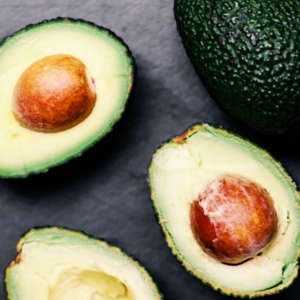 According to the US Department of Agriculture, the recommended daily servings of fruit and vegetables depends on your age, sex and level of physical activity. In general, we should aim for 1 to 3 cups of veggies and 1 to 2 cups of fruit per day. Before you head to the grocery store or farmer’s market, know how to pick out fresh and ripe produce.
According to the US Department of Agriculture, the recommended daily servings of fruit and vegetables depends on your age, sex and level of physical activity. In general, we should aim for 1 to 3 cups of veggies and 1 to 2 cups of fruit per day. Before you head to the grocery store or farmer’s market, know how to pick out fresh and ripe produce.
Tips to Select Fresh Produce
When we purchase fresh fruits and vegetables, it’s important to be mindful of the timeframe – do you plan to eat the produce right away or are you buying for the week? As some produce can be costly, whether off-season or sold by weight, make an effort to consume what you buy within the next several days.
Also, choosing fresh fruits and vegetables involves more than sight – you should also smell and feel your produce! Here are our tips to select popular fruits and vegetables at their freshest.
Apples
While there are thousands of apple varieties, your local store likely sells 5 or 6 of them. Whether you like the green, red or yellow, the apples you choose should be rich in that color. Give them each a squeeze to make sure they’re firm and not tender.
Asparagus
This is a good example of a vegetable that can become expensive off-season, which makes it all the more important to pick a good bundle! Fresh asparagus should have closed tips and firm stems for the best flavor and texture.
Avocados
In season all year, avocados can be one of the most challenging fruits to select. Your choice may depend on whether you need the avocado ripe at purchase or for a future recipe. A ready-to-eat avocado will be soft but not sunken and it’s skin will be almost black.
Bananas
Everyone has their own preference on bananas – some like to eat the bright yellow ones, while others prefer some brown spots. In any case, a ripe banana is firm and yellow with some brown speckles.
Berries
Every berry, from blueberries to blackberries, should be firm with no signs of mold, bright and shiny in color. Strawberries will have an attached stem cap when fully mature.
Broccoli
Members of the cabbage family should be bright and compact when ripe. Broccoli heads should be dark green or green with some purple; yellow buds indicate over maturity.
Citrus Fruits
Oranges, grapefruits, lemons and limes – all citrus fruit should be smooth, firm and heavy with juice. Ripe citrus fruits also stay true to their standard color – for instance, limes should be bright green rather than yellowish green.
Grapes
Whether you prefer green or red grapes, avoid wrinkled and unrounded clusters. Ripe grapes are firm, rounded and smooth.
Lettuce
Shopping for lettuce can sometimes be deceiving. When heads are unwrapped and exposed, they can look dirty – yet a quick wash or removing the outside layer reveals fresh leaves below. If the leaves look wilted or bruised, choose another head.
Peaches
Depending on the type, a ripe peach may range from white to yellow with hints of red. Choose peaches that are firm and plump with juiciness, without any bruises.
Potatoes
White and sweet potatoes should be smooth and firm, without any bruises. To be safe, when white potatoes grow sprouts or turn green, they should not be eaten.
Tomatoes
From cherry to Roma, tomatoes should be firm and smooth. The skin should have a subtly sweet scent with no wrinkles or soft spots.
At Colony Diner, we pride ourselves on using fresh, local produce in all the meals we serve. For breakfast served all day, large portion lunches, delicious dinners and decadent desserts, visit our Wallingford restaurant today!






